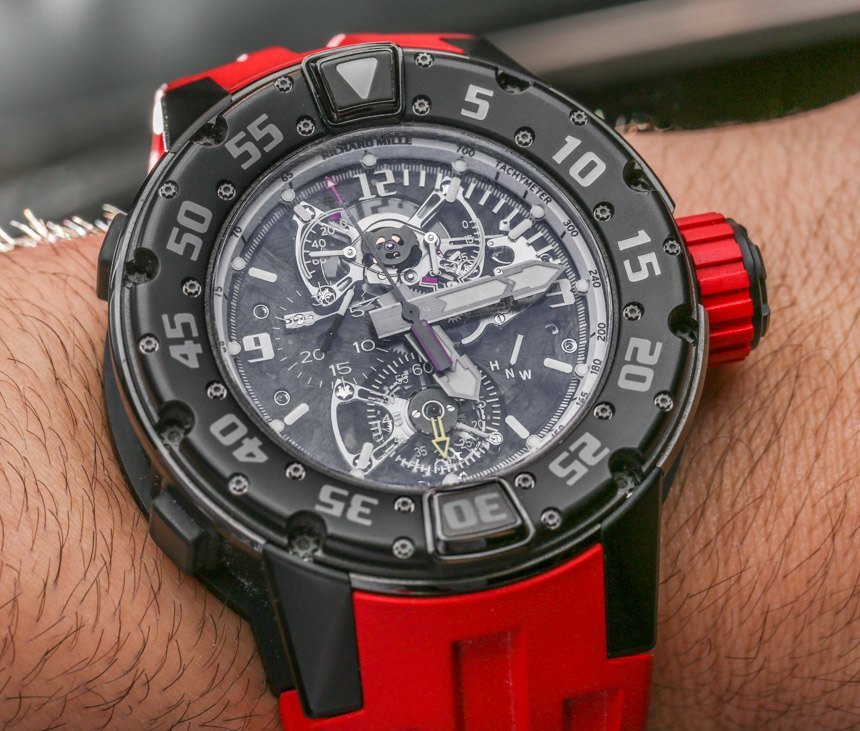
I can easily say that the Richard Mille RM 025 Tourbillon Chronograph Diver’s watch is one of the most exotic watches in the world. There aren’t very many of them around in general, and very few are alike, given the array of highly limited edition models available regionally around the world. This Richard Mille RM 025 Tourbillon Chronograph Diver’s watch in a black-colored titanium and carbon composite case with red strap is and matching crown ring is a version that I’ve only seen this once – and chances are that I’ll never see another one around quite like it, because it is, in fact, a custom piece with the red hardware elements. Is rarity alone what makes the Richard Mille RM 025 Tourbillon Chronograph Diver’s watch exotic? No. Like a Ferrari FXX, this is a rare species in an already rarefied world, given what it does and what it is made out of.
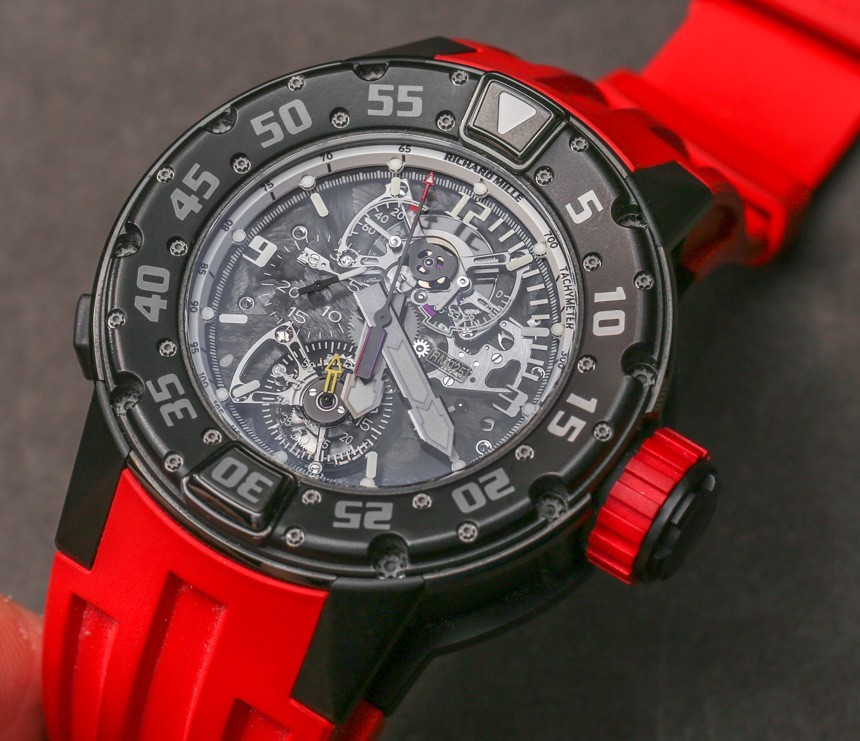
Explaining Richard Mille as a watch brand to horological novices is challenging. The first thing you notice about the brand’s products is the distinctive modern, technical designs of their timepieces. The second thing you notice (if you ever get that far) is their extremely expensive prices. Richard Mille himself doesn’t talk about prices too much. Typical in his French demeanor, discussing price feels like a topic he has distaste for – partially because in the French cultural-operated Swiss watch industry, costs are not always part of genteel conversation, and second, because brands know that many of their customers simply don’t understand how much money can be sunk into the development and production of such small things. Nevertheless, with many watches priced far north of $500,000, Richard Mille is certainly making money. The question at the end of the day to me is always “are they worth it?”
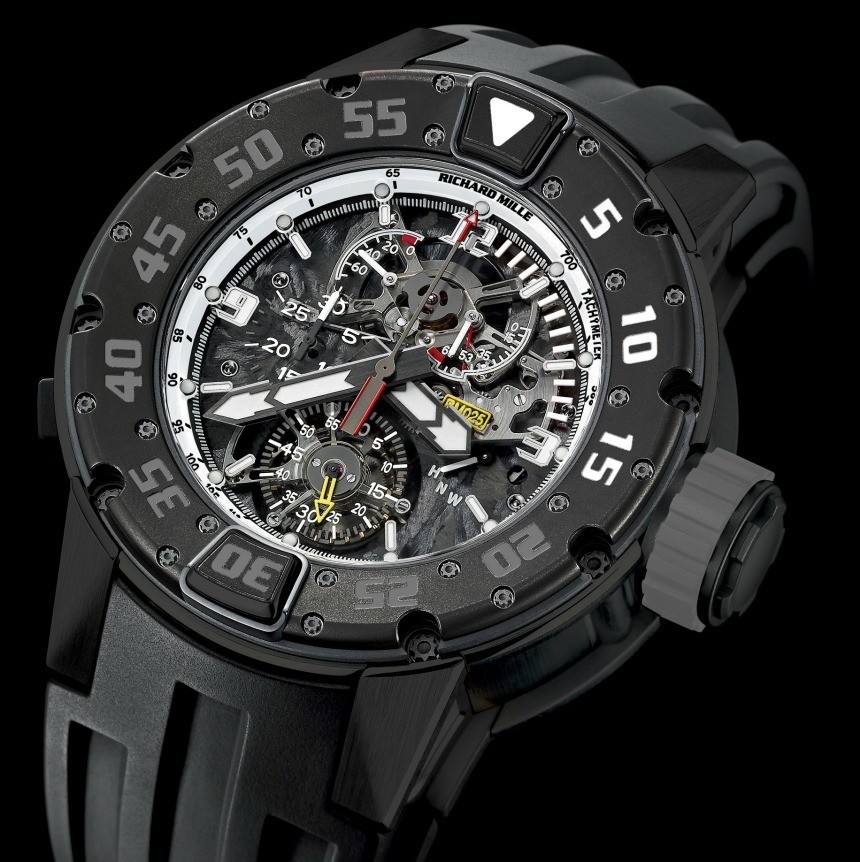
What fascinates me is that both aspirational and seasoned watch consumers ask this very reasonable question on a daily basis. Is a luxury watch worth the money? Is a Rolex watch worth the money? Is a Patek Philippe watch worth the money? Is a Greubel Forsey or Richard Mille watch worth the money? I don’t know if I can truly answer, but I may be at a slight advantage compared to some in attempting to explain why they might be priced so highly.
An example I often give is how a product’s quality tends to go up as the price goes up, but as you get closer and closer to “perfection,” each graduation of quality costs more. The difference in quality from a $100 to $200 watch should be appreciable in most instances. The difference in quality from a $500 to $1,000 should be similarly appreciable, but comes at a greater cost. To go higher up in quality, you might then need to go to $3,000 and then to $10,000 and then to $20,000. As the price of items goes up, it takes more and more investment to get to the next step.
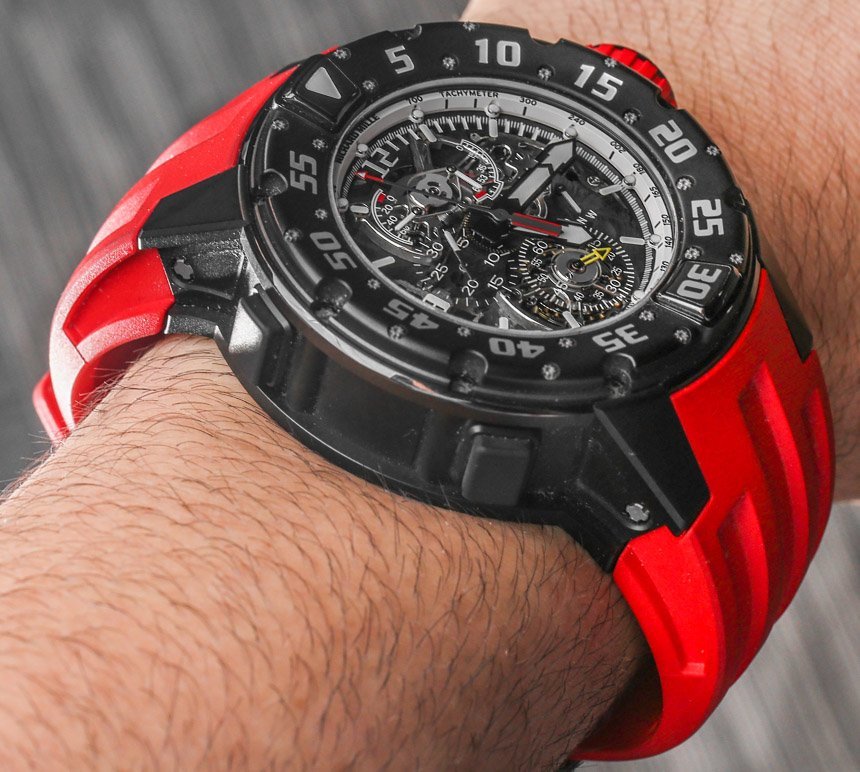
So let’s take that $100,000 watch. How much more money would it take to get just a little bit more decoration and complication? A few thousand dollars isn’t going to get you any more in most instances. What about at a $300,000 level? In this range, the differences in watches and quality is sometimes so small, only experts can tell. The idea is that Richard Mille really does offer a degree of detailing and production precision that only a handful of other brands can offer – and they are the only ones, in my opinion, to be doing it to modern looking watches. Compare them for example to Greubel Forsey who is much more classic in their interpretation of “super watches.” In fact, Richard Mille, as a luxury watch brand inspired mostly by today while preserving the values of traditional Swiss mechanical watch making is joined only by a small roster of colleagues. Richard Mille is the biggest success of them all worldwide, and easily has the most expensive watches.
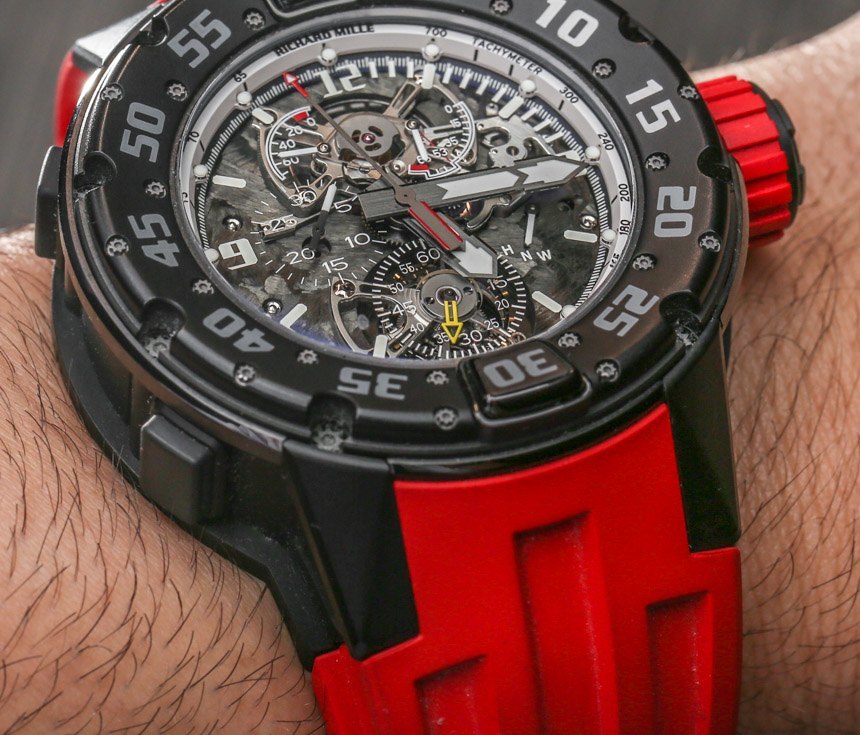
I don’t know if the above really explains why a Richard Mille tourbillon needs to cost upwards of $500,000, but I think it does explain how it requires exponential investment to add just a few percentage points of “refinement” to a very high end watch. Take a Richard Mille watch under a loupe (magnifier), and you’ll be impressed at how well they do things correctly with an incredible attention to detail. You don’t have to love their aesthetics, but they aren’t joined by competitors offering the same product for a fraction of the price. In fact, when people ask me for a budget Richard Mille, I tell them to buy an Hublot.
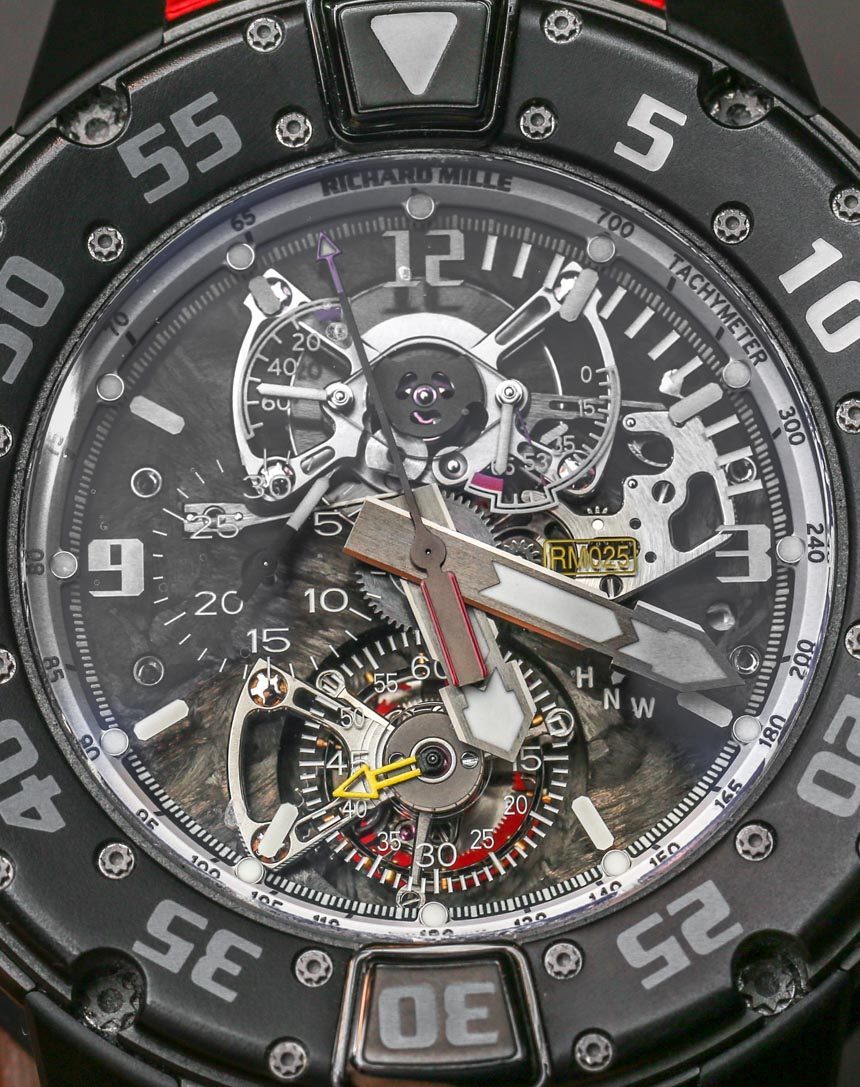
So let’s get back to the exotic and not-so-little Richard Mille RM 025 Tourbillon Chronograph Diver’s watch. I am not even going to answer the question of when a 300 meter water resistant dive watch with a tourbillon and chronograph is necessary. That, clearly, is very far from the point, and if you are at dinner with Richard Mille or Richard Mille brand fans, I don’t suggest you bring up that exact question. As part of the Richard Mille dive watch collection, the Richard Mille RM 025 Tourbillon Chronograph Diver’s watch is actually among Richard Mille’s rare round-dialed watches. It is joined by the RM 028 diver (hands-on here; the most accessible Richard Mille diver, with a price under $100,000), as well as the RM 032 Chronograph Diver (about $150,000). While these watches share a mostly similar case, the Richard Mille RM 025 Tourbillon Chronograph Diver’s watch has a much more unique set of complications and is priced in a totally different galaxy.
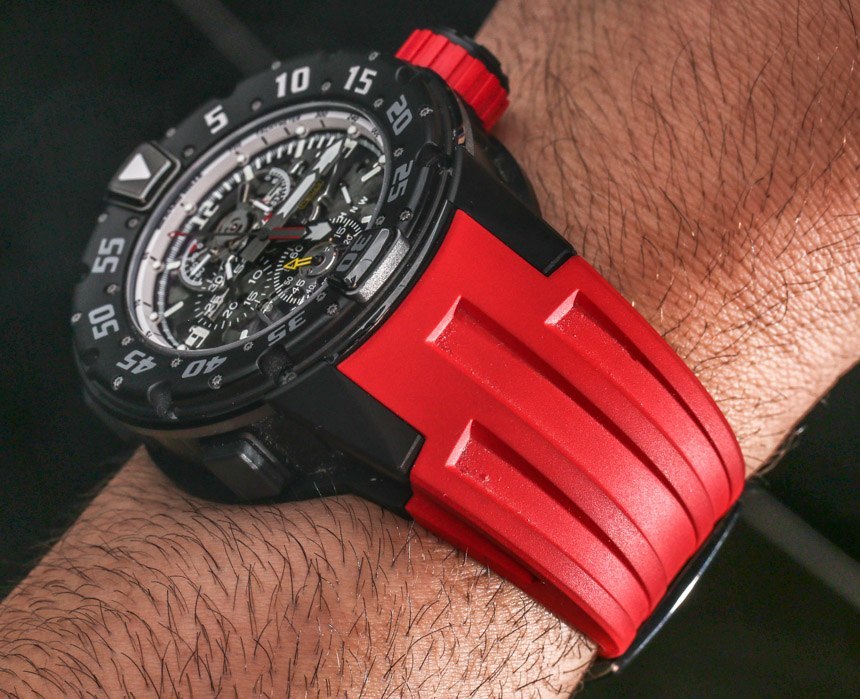
Let’s talk about the case of the Richard Mille RM 025 Tourbillon Chronograph Diver’s watch. There are various versions of the watch, of course, so this black titanium model is just one of them. The case is water resistant to 300 meters and has a special rotating bezel that only turns when the pushers at 12 and 6 o’clock are depressed. This isn’t a small watch either, at 50.7mm wide and 19.1mm thick. It wears about as well as it can, given the steeply sloping lugs, but you need serious wrists to pull this guy off. Of course, the case construction is excellent, and down to the smaller detail of the titanium “spline” screws, it feels like a well-made machine. Speaking of which, are there enough screws in the bezel for you?
I rather like the really big crown which feels like it is larger than it needs to be – even if you create some type of scenario where a diver with gloves on still needs to wind it. The large size of the crown (that has a built-in torque limiter to prevent over-winding) actually helps the overall mass of the watch look less. The chronograph is a monopusher chronograph with the single pusher being located at 8 o’clock on the case.
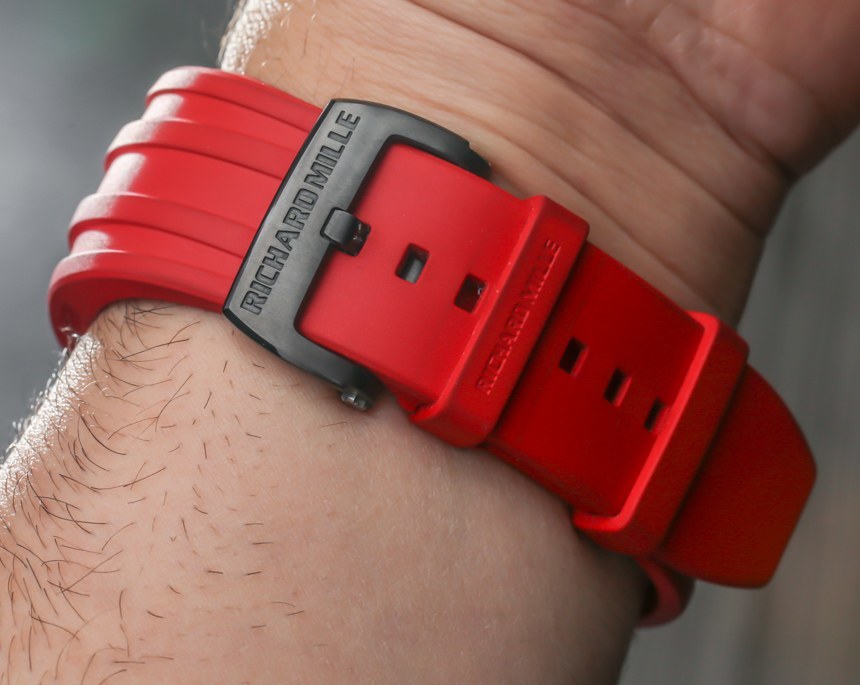
I normally wouldn’t spend time talking about a red rubber watch strap, but again, even the strap is unique on the Richard Mille RM 025 Tourbillon Chronograph Diver’s watch. The strap is actually made from a material known as Kalrez, just one of many specialized industrial materials Richard Mille has borrowed from other industries (that actually need them) for use on their watches. Kalrez is apparently almost totally chemical resistant and maintains stability at a temperature of 327 degrees Celsius. Primarily relied upon in the pharmaceutical and aerospace industries, thanks to Richard Mille, you can enjoy the theoretical benefits of Kalrez on your wrist in conditions that would otherwise totally destroy a human body.
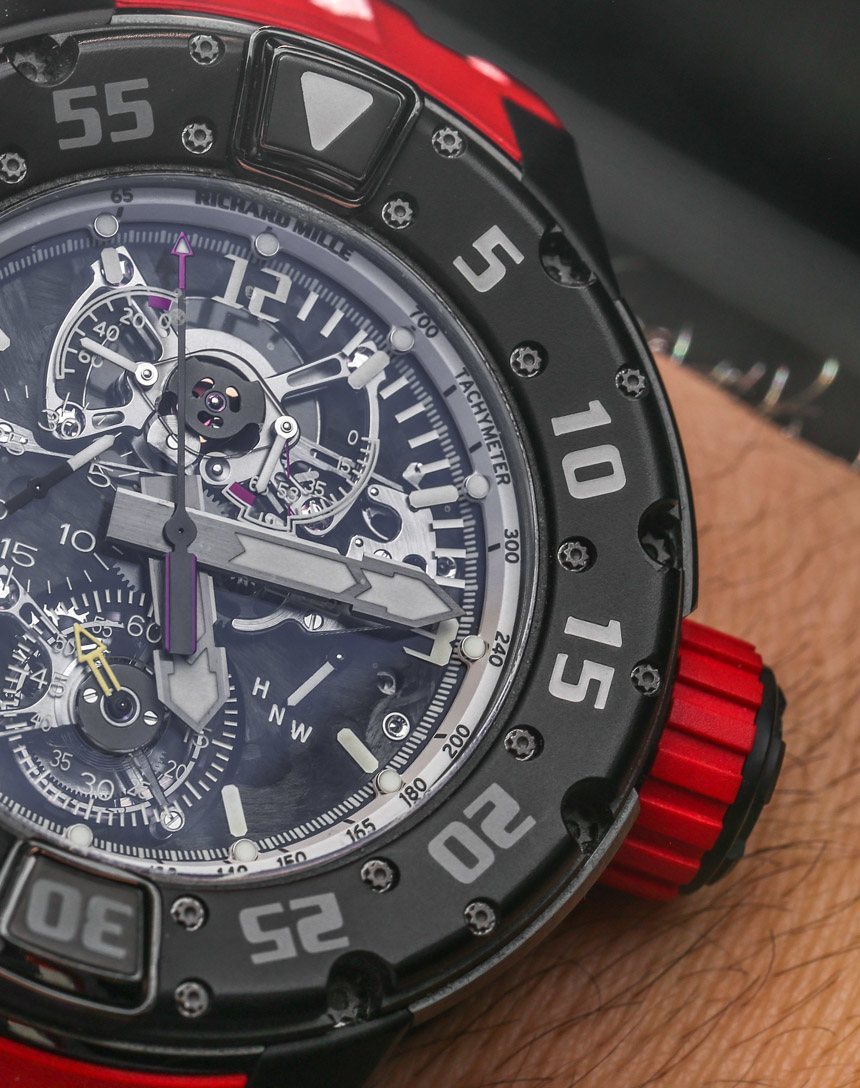
Look into the dial of the Richard Mille RM 025 Tourbillon Chronograph Diver’s watch, and you’ll see a textured movement plate. Yes, Richard Milled decided to use a “carbon nanofiber” baseplate for the movement. I am sure there is some interesting reason why carbon nanofiber is better than metal. It looks cool and makes the watch even more exclusive – and if you have the disposable income, you really want your dive watch to be made with it, for some reason that only male hormones can understand.
The movement inside of the Richard Mille RM 025 Tourbillon Chronograph Diver’s watch is the Richard Mille caliber RM025 manually wound movement. Once again, you get some interesting features that you don’t normally see together. I like that Richard Mille went out of their way to create as special of an overkill dive watch as possible. I will say that I appreciate how they didn’t put a huge amount of emphasis on the tourbillon itself. You might not even notice it there as it sits under the yellow arrow-style running seconds hand at 6 o’clock on the dial. Of course, many tourbillons also double as seconds indicators, and here, Richard Mille is just making light of that by adding legibility to the dial.
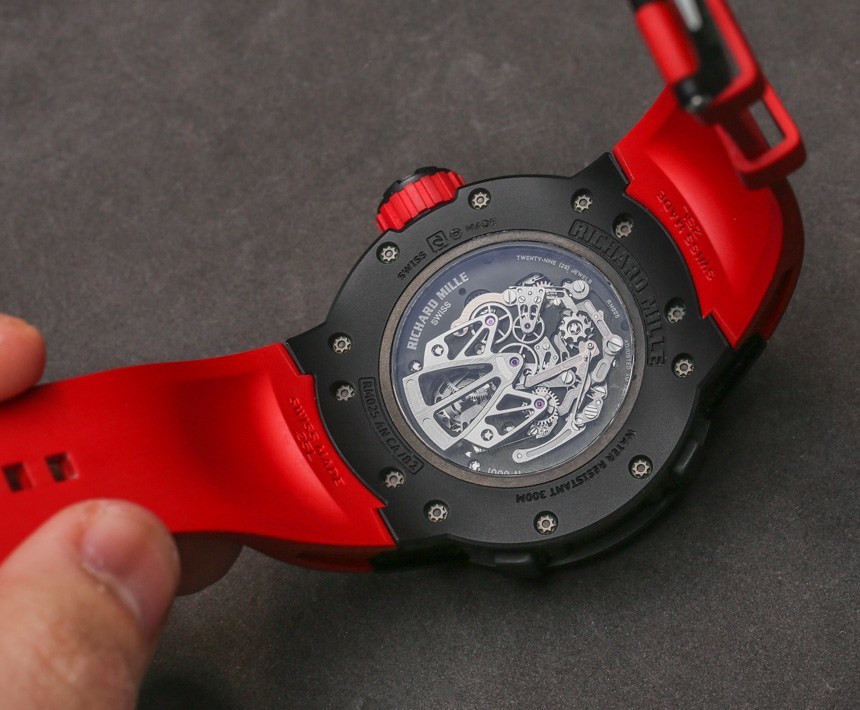
The RM025 movement operates at 3Hz (I would have preferred 4Hz) with a power reserve of about 50 hours. Of course, there is a power reserve indicator on the dial. Adjacent to the power reserve indicator is another exotic element – a torque indicator complication. These are uncommon, but when you do find them in watches, they are often linked to a power reserve indicator. These indicators offer a measurement of the torque output of the movement, which is a function of how tightly wound the spring is.
What you ideally want is a middle-range torque curve that will offer the best accuracy over time. Tighten the mainspring which powers the watch too much, and it releases too much torque which can make the movement run fast. If the mainspring is almost totally wound down, the torque will drop and the watch will run slow. So the way to use the torque indicator is by winding up the mainspring enough so that the torque indicator is in the middle region (in most watches). This does not always mean a fully wound movement. You can then look at the torque indicator in conjunction with the power reserve indicator to know when the watch needs winding.
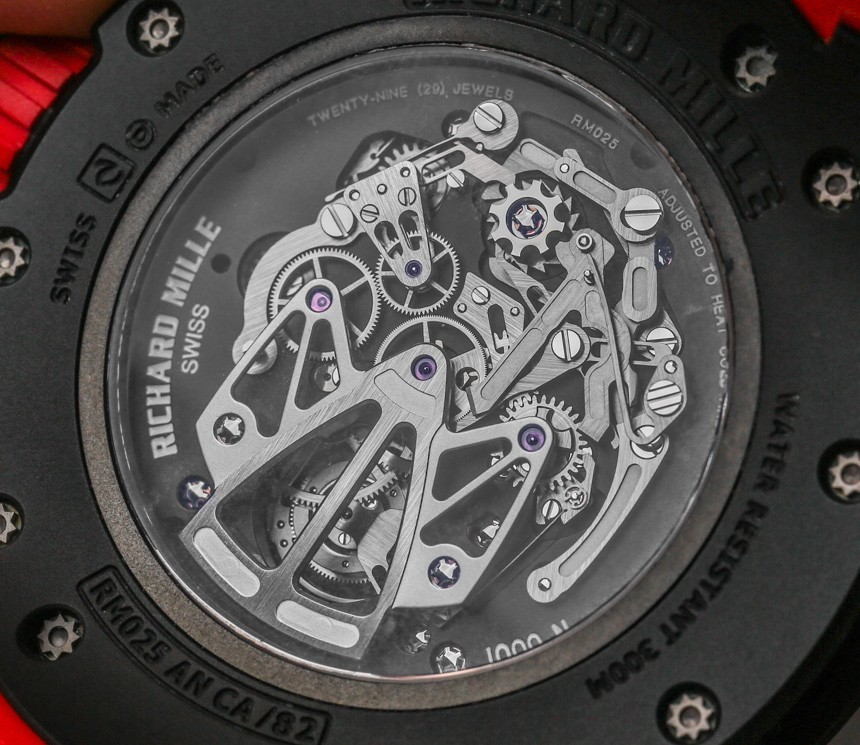
Richard Mille designed the RM025 movement with a longer than 50 hour power reserve, but they don’t recommend you wind for more than about 50 hours because you’ll have too much torque coming from the movement. In terms of setting the time and winding the watch, that, of course, is all done from the crown. However, you never pull the crown out, but rather, press it in like a button. This acts to cycle through the crown’s functions – which are visible on a “function selector” indicator that is also on the dial.
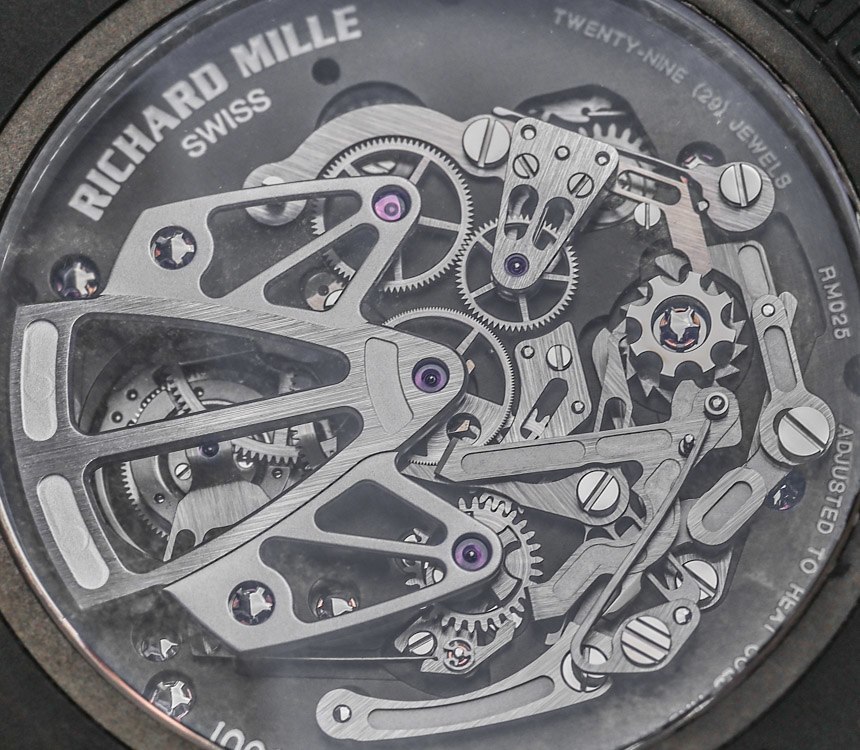
Last in the RM025 movement is the chronograph. Its most interesting feature is its use of a titanium column wheel transmission system. The chronograph uses the central seconds hand as well as the subsidiary minute counter near 9 o’clock on the dial. While it isn’t for everyone, I love Richard Mille’s philosophy of making the mechanical movement the star in each of their watches. While the designs of their movements are as modern as their cases, the finishing is very nicely done, with polished surfaces and beveled edges. Legibility in reading the time isn’t that bad either, with the large, lume-filled hands (and lume-filled hour markers).
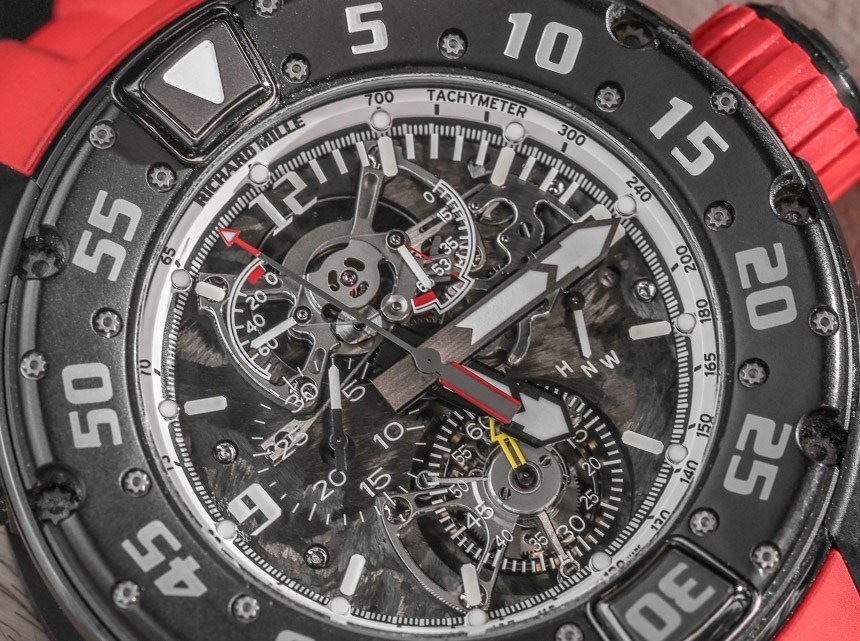
Taken as a whole, the Richard Mille RM 025 Tourbillon Chronograph Diver’s watch is arguably totally overkill for a sports watch. Then again, we live in a consumptive culture, where overkill can be a good thing. We tend to buy as much overkill as we can – at least in certain cultures (especially when we can afford it). We buy cars that go faster than we can drive, phones that have more functions than we will ever use, computers with more processing power than most of us need, and watches that go deeper, survive longer, or perform more functions than most people will need or use. That’s just our consumer behavior, and when we see products like the Richard Mille RM 025 Tourbillon Chronograph Diver’s watch, we recognize that at least some companies totally get and provocatively exploit that.
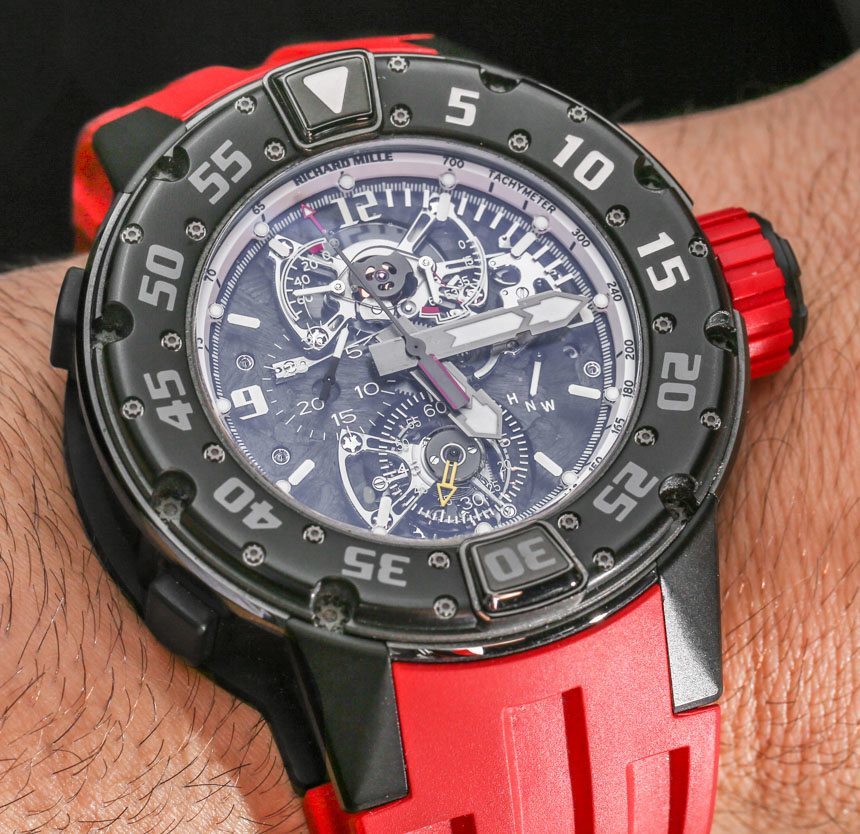
I don’t care that I’ll never be able to afford one and probably wouldn’t dedicate the funds to it if I could, but I think the Richard Mille RM 025 Tourbillon Chronograph Diver’s watch is a really cool timepiece and I am at least glad some people are willing to shell out for it. The “base” Richard Mille RM 025 Tourbillon Chronograph Diver’s watch in titanium with 18k red gold lugs is priced at $695,000 and one like this, in black with a “carbon composite case” has a price of $750,000. richardmille.com
